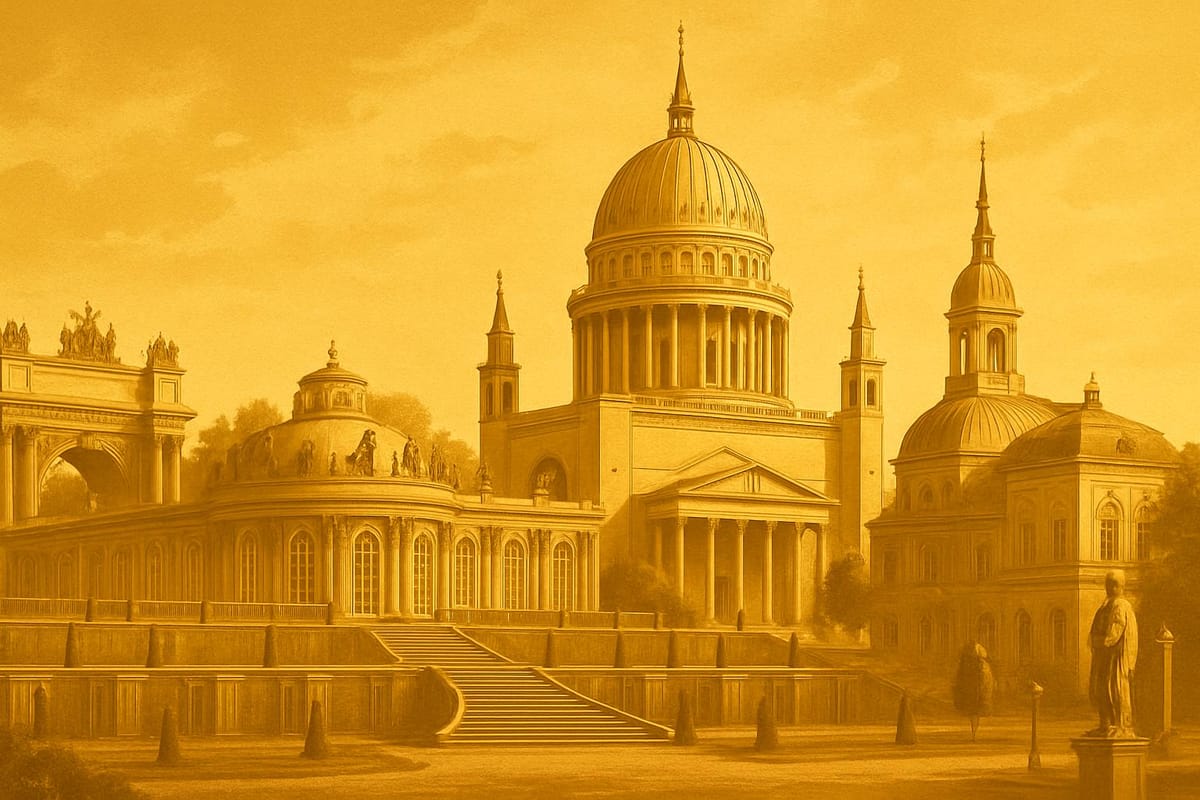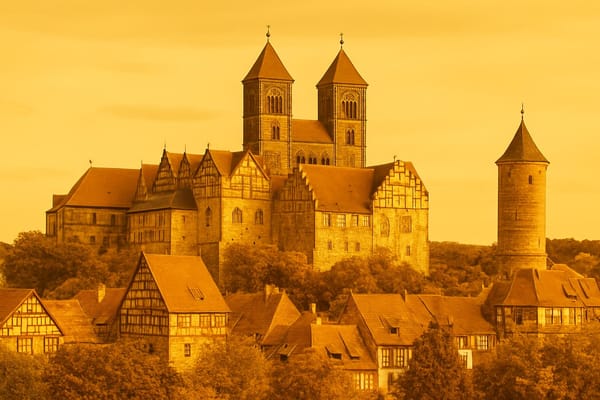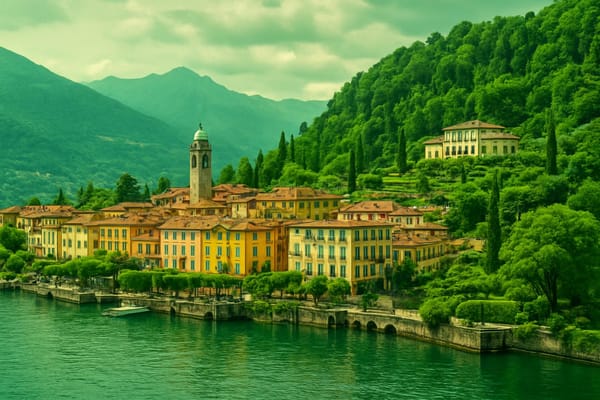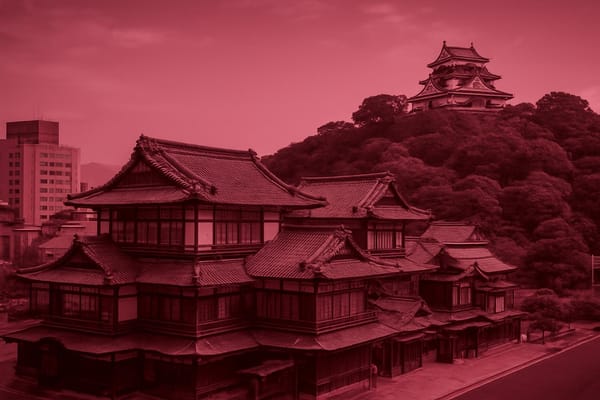Potsdam
Explore Sanssouci palaces, UNESCO parks, baroque gardens, lakes & film studios - history awaits

Important things to know about Potsdam
Potsdam, Germany's capital of the federal state of Brandenburg, is a city where layered history meets contemporary life, offering an appealing blend of calm residential quarters, vibrant cultural production and a strong scientific and educational profile; known for its tree-lined avenues, varied architecture from different eras and expansive green spaces, Potsdam balances a relaxed pace with dynamic growth, attracting families, students and professionals who value proximity to Berlin while enjoying a distinct local identity, efficient public transport and a growing tech and research scene that includes universities, institutes and creative enterprises, which contribute to a steady flow of innovation and employment opportunities, while local markets, cafés and restaurants reflect a multicultural population and an emphasis on sustainable urban development, cycling and pedestrian-friendly planning, and community initiatives that support arts, education and environmental conservation, making the city appealing for long-term living as well as short-term stays; the municipal administration places priority on preserving historical character alongside modern needs, investing in infrastructure, digital services and housing projects that respond to demographic change and climate goals, so Potsdam continues to evolve as a magnet for scholars, entrepreneurs and culturally curious residents who appreciate the combination of heritage, scientific excellence and a high quality of life just a short journey from Germany's capital.
Sightseeing hot-spots in Potsdam
Potsdam is a treasure for travelers seeking baroque elegance and landscaped beauty, anchored by the world-famous Sanssouci complex. Wander the terraced gardens of Sanssouci Palace, admire the gilded details of the New Palace and lose yourself in the sweeping avenues of the Sanssouci Park, a site recognized as UNESCO World Heritage. Architectural lovers will appreciate the intimate rococo pavilions, classical colonnades and ornamental fountains that make sightseeing in Potsdam unforgettable, while photographers find endless compositions between ornate facades and serene parkland.
Beyond the palaces, the city offers a wealth of cultural stops that reward any curious visitor. The Dutch Quarter charms with red-brick houses and boutique cafés, while Cecilienhof brings history alive as the venue of the Potsdam Conference. Film buffs can explore Filmpark Babelsberg, and art enthusiasts will enjoy the contemporary collections at the Museum Barberini. Historic bridges such as the Glienicke Bridge and the dramatic silhouette of the Nikolaikirche highlight the riverine setting, so exploring Potsdam’s neighborhoods yields a mix of royal, artistic and cinematic sights that define the region of Brandenburg.
Planning a visit is simple and flexible whether you’re aiming to visit Potsdam as a day trip from Berlin or to linger longer for in-depth discovery. Good public transport links, compact city center walking routes and scenic bike paths make sightseeing efficient and enjoyable; prioritize a mix of gardens, palaces and local streets to capture the full atmosphere. For best results, book timed entry for major palaces, allow time for leisurely strolls through the parks, and enjoy local cuisine in historic squares to round out your Potsdam experience.
Hotels to enjoy in Potsdam
Potsdam, Germany offers a wide spectrum of hotels in Potsdam that cater to tourists and business travelers alike, from elegant boutique hotels tucked into historic quarters to larger luxury properties overlooking the famous royal parks. Guests often choose accommodation close to Sanssouci to enjoy early-morning strolls among the palace gardens, while others prefer the vibrant amenities of the city center where restaurants, galleries and nightlife are within walking distance. Whether you are seeking a romantic weekend, a family-friendly stay, or a convenient base for exploring Berlin, Potsdam’s hotel scene blends Prussian heritage with modern comfort, making it easy to find the best hotels in Potsdam for your travel style and budget.
When planning your stay, look for practical features like free Wi‑Fi, breakfast included, on-site spa services or conference rooms for business needs; many hotels also advertise parking and are conveniently located near Potsdam Hauptbahnhof and public transport to reach Babelsberg Film Park or the Glienicke Bridge quickly. Seasonal events and summer festivals drive demand, so early booking can secure top rooms and special offers at budget-friendly and premium properties alike. Thoughtful details such as pet policies, family suites, and proximity to landmarks like Sanssouci or the Neuer Garten make comparing options simple, ensuring your stay in Potsdam, Germany is comfortable, memorable and tailored to what matters most for your trip.
Restaurants to try in Potsdam
Potsdam’s culinary scene is a lively mix of tradition and innovation, and the restaurants of Potsdam reflect that balance beautifully. Strolling through historic neighborhoods toward Sanssouci or along the waterfront, you’ll find cozy bistros, elegant dining rooms and casual cafés that emphasize local produce from Brandenburg farms. The best restaurants in Potsdam often pride themselves on seasonal menus, farm-to-table ingredients and a warm atmosphere where classic German cuisine sits comfortably next to modern European and international influences. Whether you seek hearty regional specialties, inventive tasting menus or relaxed terrace dining, Potsdam dining offers something memorable for every visitor and local alike.
For those optimizing a travel itinerary or simply searching for standout places to eat, Potsdam restaurants deliver a variety of experiences without sacrificing quality. Small family-run spots serve up comforting dishes with a focus on tradition, while contemporary kitchens experiment with flavors and presentation to create a gourmet experience. Wine lists and craft beers complement menus that often include vegetarian and vegan options, making restaurants in Potsdam accessible to diverse tastes. From intimate candlelit dinners to lively brunches, the city’s eateries combine historic charm with modern culinary trends, ensuring that Potsdam dining remains a highlight of any visit to the region.
Best shopping stops in Potsdam
Potsdam shopping blends historic charm and modern retail in a compact, walkable city where every stroll can turn into a discovery. The heart of retail life is the Brandenburger Straße, a lively pedestrian boulevard lined with a mix of international chains and independent boutiques that cater to fashion, homeware and design lovers alike. Nearby, the Holländisches Viertel offers a completely different atmosphere: narrow cobbled lanes, red brick facades and dozens of small shops selling antiques, handmade goods, art and unique gifts that reflect Potsdam’s creative scene. For practical needs and a wider selection, the Allee-Center and other shopping centers provide department stores, specialty shops and seasonal promotions, making shopping in Potsdam convenient whether you’re browsing or buying.
Beyond the main streets, Potsdam’s markets and specialty stores are real highlights for foodies and collectors. Weekend farmers’ markets and seasonal stalls showcase regional produce, gourmet cheeses, local wines and baked goods that are perfect for taking home or sampling as you explore the city. Those interested in interior design and vintage finds will appreciate the combination of design stores and smaller secondhand outlets tucked into side streets and courtyards, while cafes and restaurants interspersed among the shops make it easy to turn a shopping trip into a full-day outing. Altogether, Potsdam shopping is an inviting mix of culture, craftsmanship and convenience, appealing to visitors seeking both mainstream brands and authentic local treasures.
Nightlife highlights in Potsdam
Potsdam nightlife blends historic charm with a lively contemporary scene, making evenings in the city as appealing as daytime sightseeing. Wander from the Holländisches Viertel's intimate courtyards with cozy cafes and cocktail bars to the buzzing Alter Markt where locals gather for craft beer and late-night conversation. For those searching for the best bars in Potsdam or a sophisticated cocktail experience, boutique lounges and riverside terraces along the Havel offer relaxed views and inventive drinks, while beer lovers can find welcoming beer gardens and brewpubs showcasing regional ales.
Music and culture are central to Potsdam nightlife, with venues like the Waschhaus hosting energetic live music nights, DJ sets and indie concerts that draw crowds from across the region. The creative hub of Schiffbauergasse provides club nights, experimental performances and late-night art events, contributing to a diverse clubs in Potsdam scene that suits students, locals and visitors alike. Whether you prefer a quiet evening with a cocktail, a riverside beer, or dancing to live bands, Potsdam nightlife delivers memorable evenings framed by historic streets and a welcoming atmosphere.
Getting around in Potsdam
The airport and train situation in Potsdam, Germany is convenient for both tourists and commuters: the main international gateway is Berlin Brandenburg Airport (BER), roughly 30–40 km away and reachable by car, taxi or a combination of regional trains and urban connections, while several general aviation airfields near Potsdam serve private and charter flights; rail travel centers on Potsdam Hauptbahnhof, which offers frequent S-Bahn (S7) services into Berlin as well as numerous regional and commuter links that integrate Potsdam into the wider Deutsche Bahn network, making onward train connections across Germany straightforward. Local public transport - trams, buses and bike-friendly routes - ensure easy transfers between the station, city attractions like Sanssouci and suburban neighborhoods, and shuttle options to the airport; travel times to BER typically range from about half an hour to an hour depending on the chosen route and time of day. Whether searching for efficient Potsdam airport transfers, reliable Potsdam train timetables or smooth intermodal journeys between Potsdam and Berlin, the region’s transport infrastructure supports both short city breaks and longer-distance travel with frequent services and practical connections.
Culture must-see's in Potsdam
Potsdam, Germany, is a compact city whose cultural highlights capture centuries of European history and contemporary creativity in one scenic setting. The jewel in the crown is Sanssouci Palace, surrounded by a sweeping park landscape that earned the site UNESCO World Heritage status; wandering its terraces and formal gardens feels like stepping into an 18th‑century courtly tableau. Beyond Sanssouci, the city’s ensemble of palaces from the Neues Palais to the Orangery reflects Prussian grandeur, while the Dutch Quarter offers a charming contrast with its red‑brick façades, cafés and artisan shops. Film lovers will seek out Babelsberg Film Studios, one of the oldest large‑scale film production sites in the world, which underscores Potsdam, Germany’s, role in international film history and contemporary media production.
Cultural life in Potsdam, Germany, extends well past historic monuments into lively museums, performance spaces and festivals that animate the city year‑round. The Museum Barberini and the Film Museum present rotating exhibitions that balance classical and modern tastes, while the Russian colony of Alexandrowka and the site of the Potsdam Conference remind visitors of the city’s multinational layers of heritage. Small galleries, theatrical productions and open‑air concerts cultivate a thriving scene for contemporary art and music, and seasonal cultural festivals encourage both locals and tourists to explore neighborhoods beyond the palace parks. Whether you’re drawn by architecture, cinema or international history, Potsdam offers a concentrated, walkable collection of cultural highlights that make it an essential destination in the Berlin metropolitan area.
History of Potsdam
Potsdam's rich history stretches from Slavic settlements through the rise of the Prussian state to its modern role as a cultural and scientific center. The story of Potsdam, Germany is inseparable from the ambitions of the Hohenzollern dynasty and rulers such as Frederick the Great, who transformed a regional town into a showcase of royal power and enlightened taste. The creation of Sanssouci and the surrounding palaces and parks established Potsdam as a landscape of baroque and rococo architecture, while later additions like the New Palace and the Dutch Quarter added layers of stylistic diversity. These estates and gardens, today recognized as a UNESCO World Heritage site, reflect the city's role as a laboratory of garden design and urban planning. The influence of French, Dutch, and Italian aesthetic ideas blended with German tradition to make Potsdam an enduring symbol of Prussian cultural identity, drawing scholars, artists, and visitors interested in the evolution of European court life and landscape architecture.
The modern chapter of Potsdam history encompasses dramatic political and social changes, from imperial capital connections to the devastation of World War II and the Cold War division that left indelible marks on the cityscape. Potsdam was the site of the 1945 Potsdam Conference, where Allied leaders shaped postwar Europe, and later became an important East German administrative center. Post-reunification restoration efforts focused on rebuilding historic landmarks and revitalizing neighborhoods, while fostering a knowledge economy centered on film and media-anchored by the Babelsberg studios-research institutes, and universities. Today, Potsdam balances preservation with innovation: restored palaces and museums coexist with vibrant cultural festivals, scientific centers, and sustainable urban development in Brandenburg. For anyone exploring the history of Potsdam, the city's layered narrative of monarchy, war, division, and renewal offers a compelling case study in how heritage can be preserved and reimagined for contemporary life.



